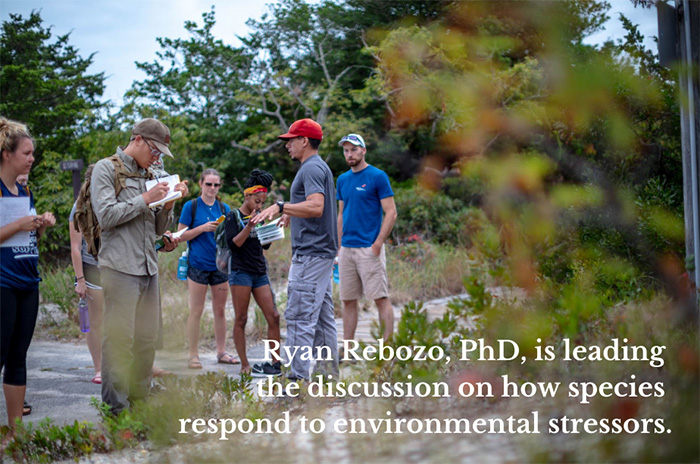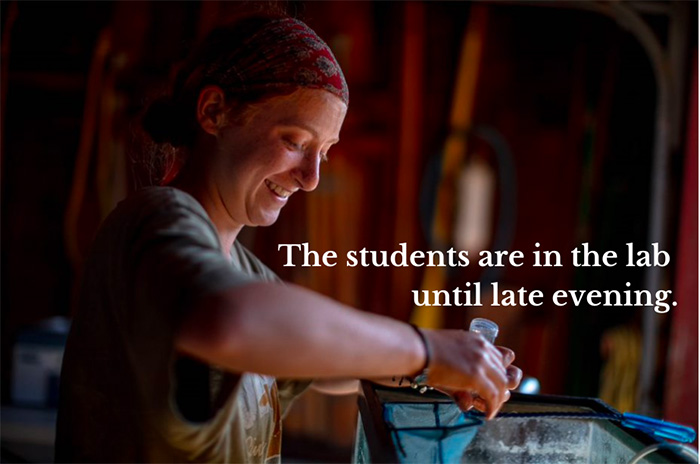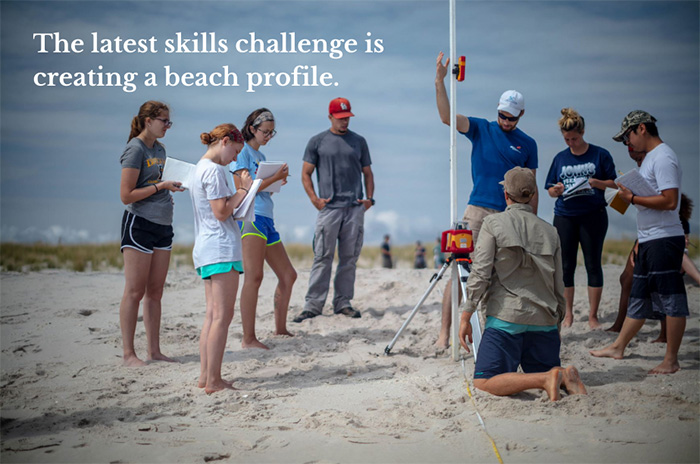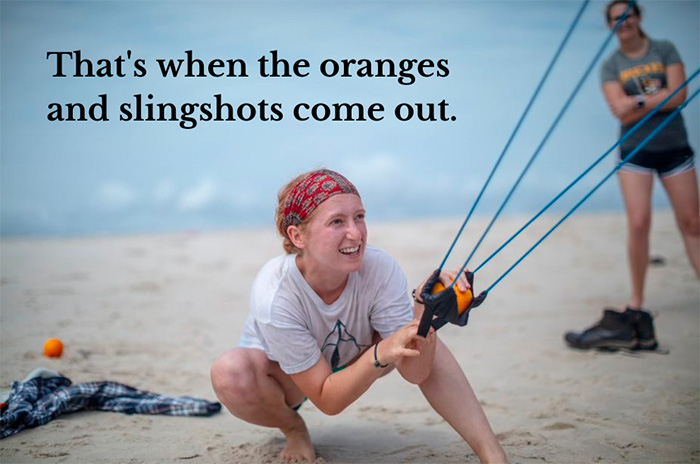Students Become Scientists in Marine Field Methods Course
By Kylie Gray
November 15, 2019

It takes most of the morning for students in the Marine Field Methods course to walk from bay to beach of Island Beach State Park, New Jersey. On bayside, the students rub sand between their fingers and note the shoreline drop-off caused by erosion. Assistant teaching professor Dane Ward, PhD, peels algae off the side of the dock, its presence indicative of a low-energy environment caused by the shelter of the barrier island they are standing on.

Making observations and jotting notes in field notebooks, together the students assemble an ecological field description, one that changes as they move past brush and toward the dunes.

From disciplines as diverse as biology, engineering and environmental policy, the students are walking in the tradition of many before them. The course, a nine-day intensive field experience headquartered at the Lighthouse Center for Natural Resource Education in Waretown, New Jersey, is said to predate even its home Department of Biodiversity, Earth and Environmental Science (BEES).

“We still visit the same habitat types and do many of the same exercises, because those methodologies are really useful,” says Ward, a Drexel alum who took the same course as an undergraduate. “What has changed is that we focus more on the development of the scientist.”
Though the field portion of the course is only nine days, students have spent the preceding summer term developing proposals for independent research projects.
“None of these students had ever written a research proposal before, which is a huge area of growth for them,” says Ward. “There wasn’t a conscious effort until this year to reflect on that: What are the defining characteristics of being a scientist? Am I doing those things? How am I supporting my peers in those same endeavors?”
One way Ward encourages reflection is by bringing in his scientist friends as guest speakers, and encouraging students to ask about their path.

It’s day seven and Ryan Rebozo, PhD environmental science ’15, is leading the discussion on how species respond to environmental stressors — something he is deeply familiar with in his role as Director of Conservation Science at the Pinelands Preservation Alliance.
For environmental science senior Jakub Zegar, it’s inspiring to see the two former classmates becomes colleagues in science.

“Networking is not always about networking up,” says Zegar, who first took Marine Field Methods two years ago and returned as a mentor to current students. “Our classmates are people who we may one day be working with. We are networking now — and the interpersonal connections have really blossomed. There is a true sense of community.”
Ward says this sense of community helps aid in the students’ development of their scientific identity. Zegar adds that teamwork is integral to the student course experience.

One of three core “boots-on-the-ground” courses for upperclassmen in the BEES department, the course is strenuous. Breakfast starts at seven, and after a full day in the field — learning how to cast nets off a boat for fisheries science, for example — the students are in the lab until late evening, working on independent research projects.
Lena Champlin, a PhD student in Drexel’s environmental science program, helps with the projects as the course TA. She has seen a transformation in the students, just days after the field experience began.

“The students came in focused on the exam and how to do well in class. Their focus has changed,” says Champlin. “Now they’re delving into becoming scientists, focusing on their research and how they’re going to apply these skills.”

On Island Beach State Park, the students’ latest skills challenge is creating an elevational profile of the beach. They work together to measure the beach’s elevation using a pole-mounted laser.

After the meticulous beach profile measurements are complete, that’s when the oranges and slingshots come out. The goal of launching oranges into the sea, Ward says, is get the citruses beyond the breakers and time them to measure longshore currents or drift. That, and maybe also to let off a little steam.
“It’s intense — 13 to 14-hour days — but I wouldn’t change it,” says Casie Hain, who is pursuing an MS in Environmental Policy. “This has been the course that has affected my studies the most, and it has all been worthwhile.”
